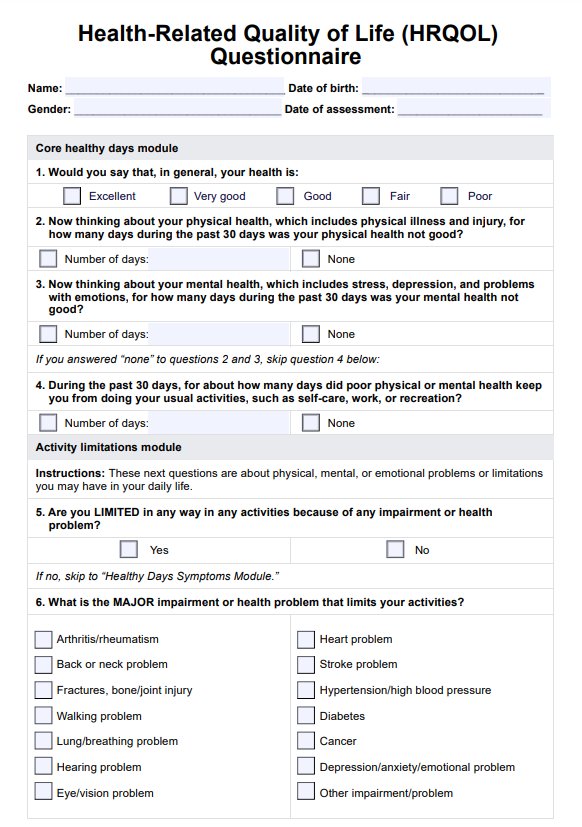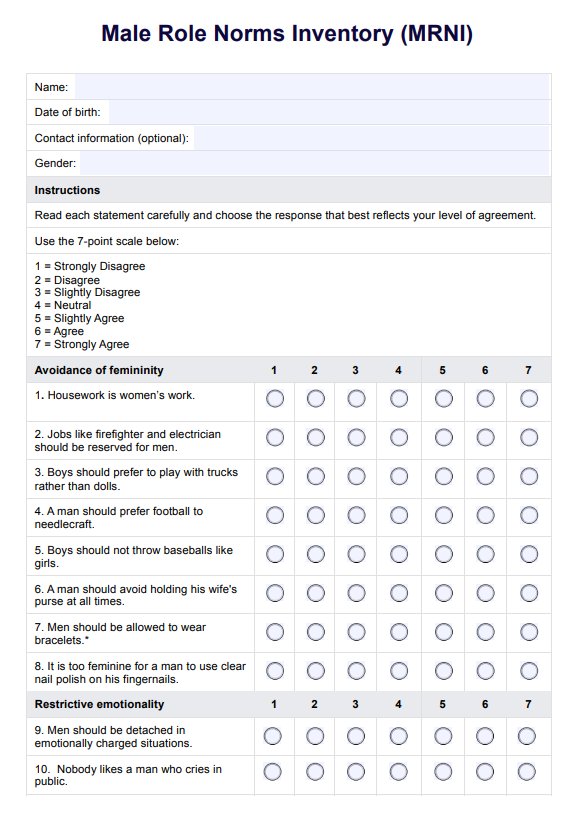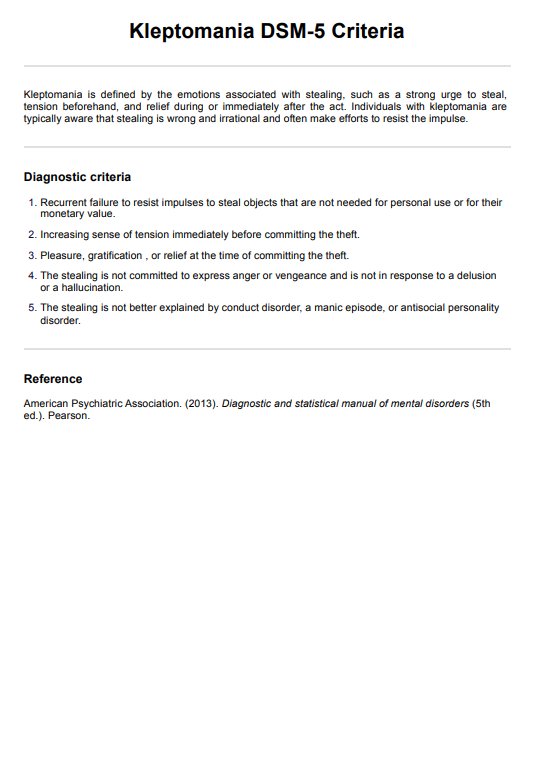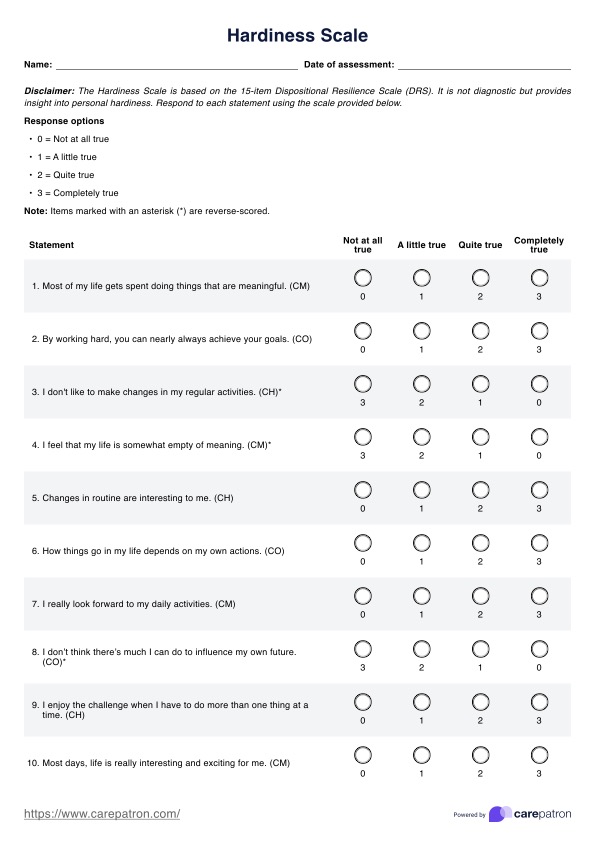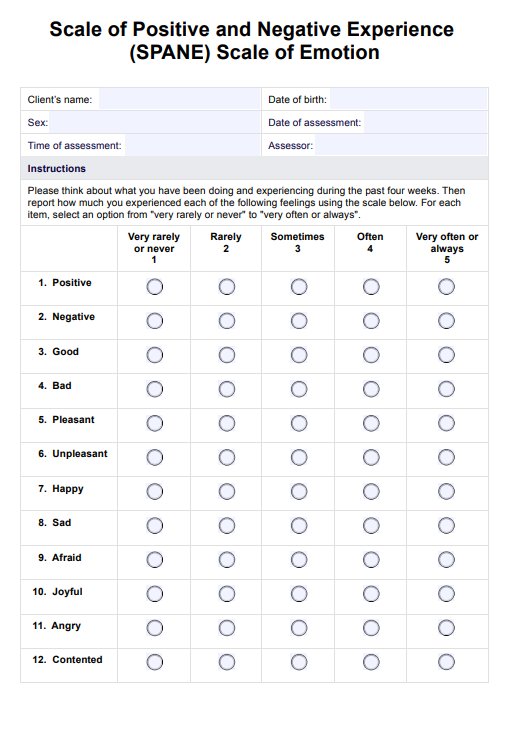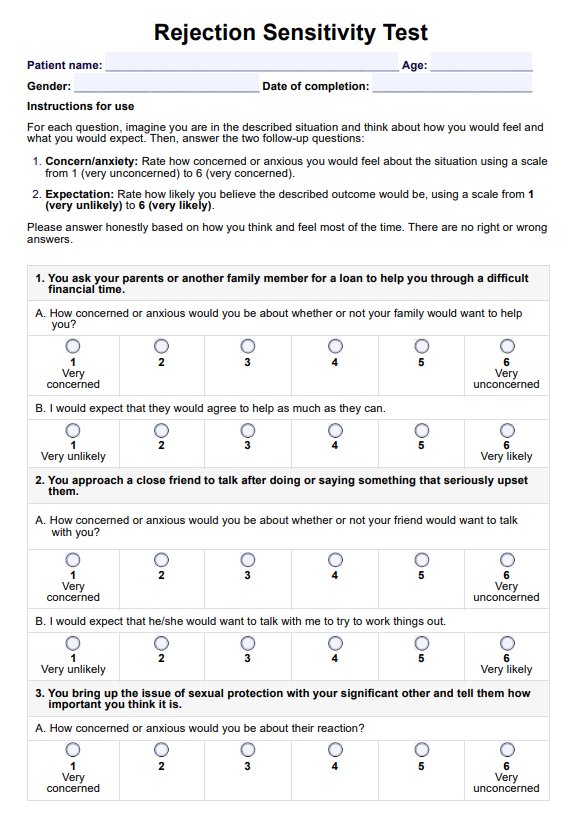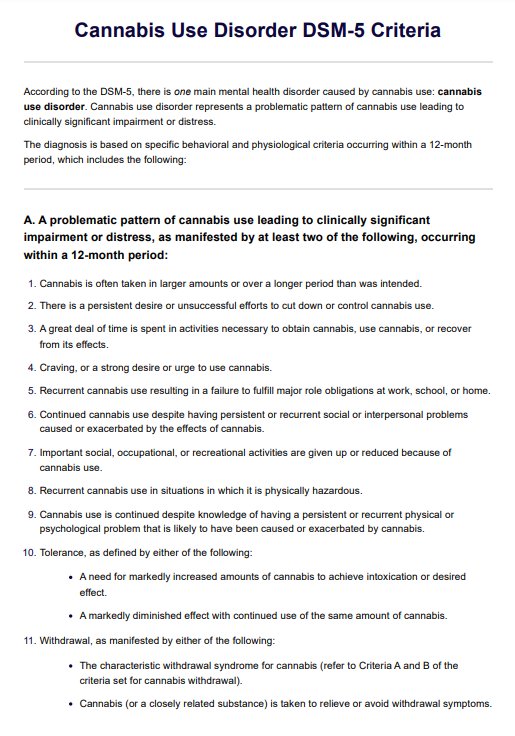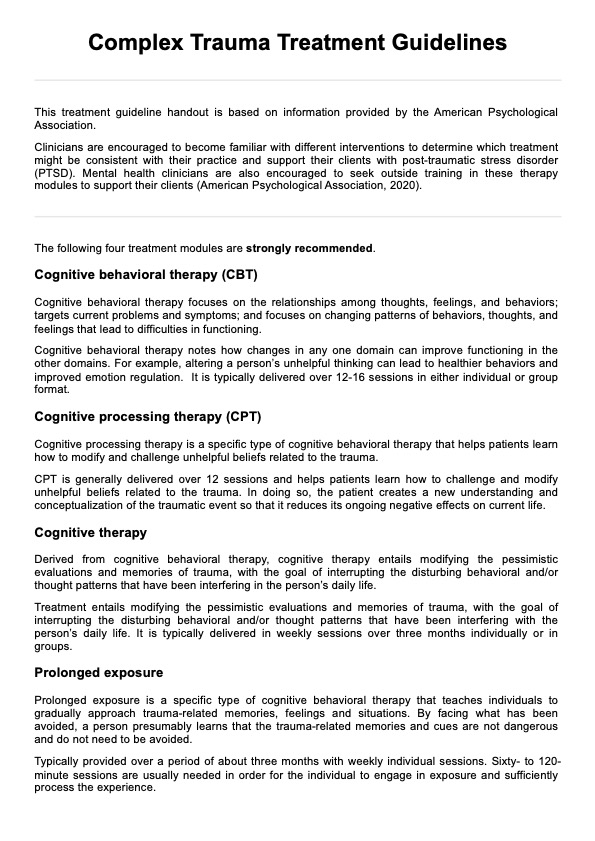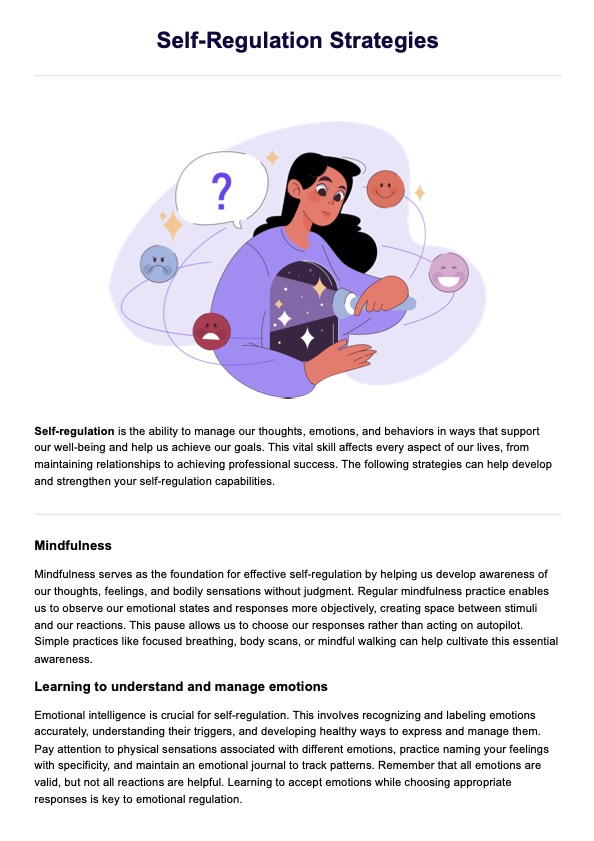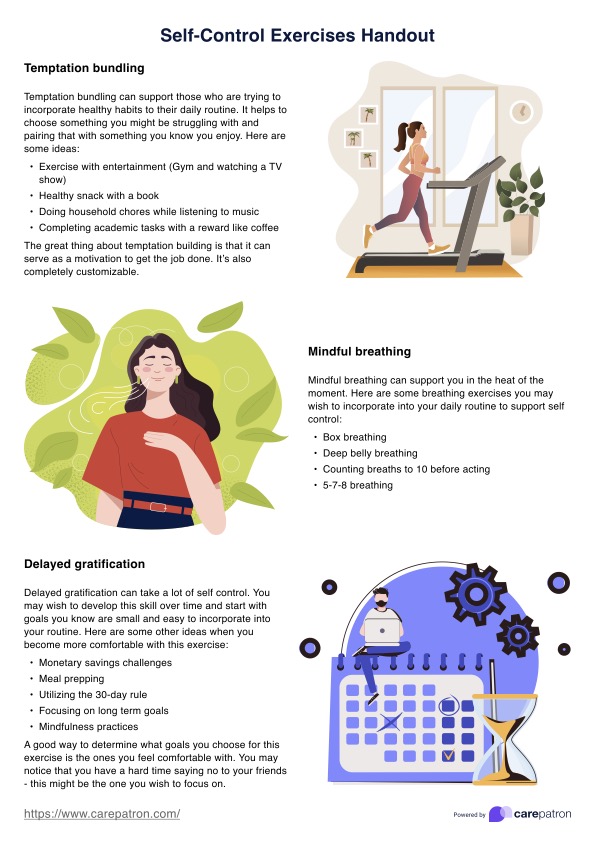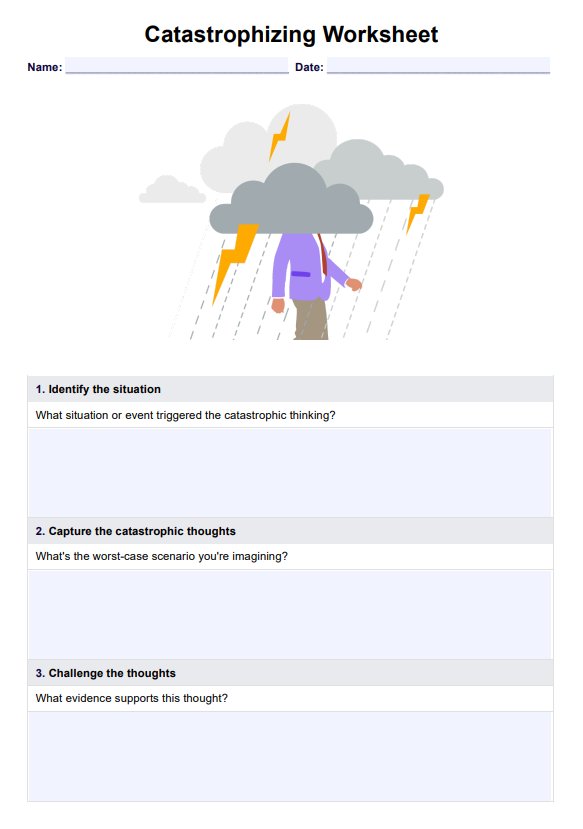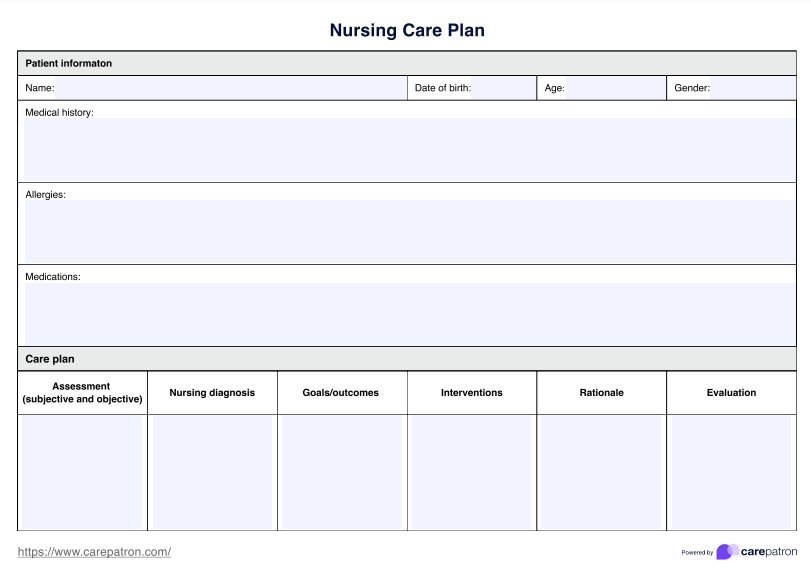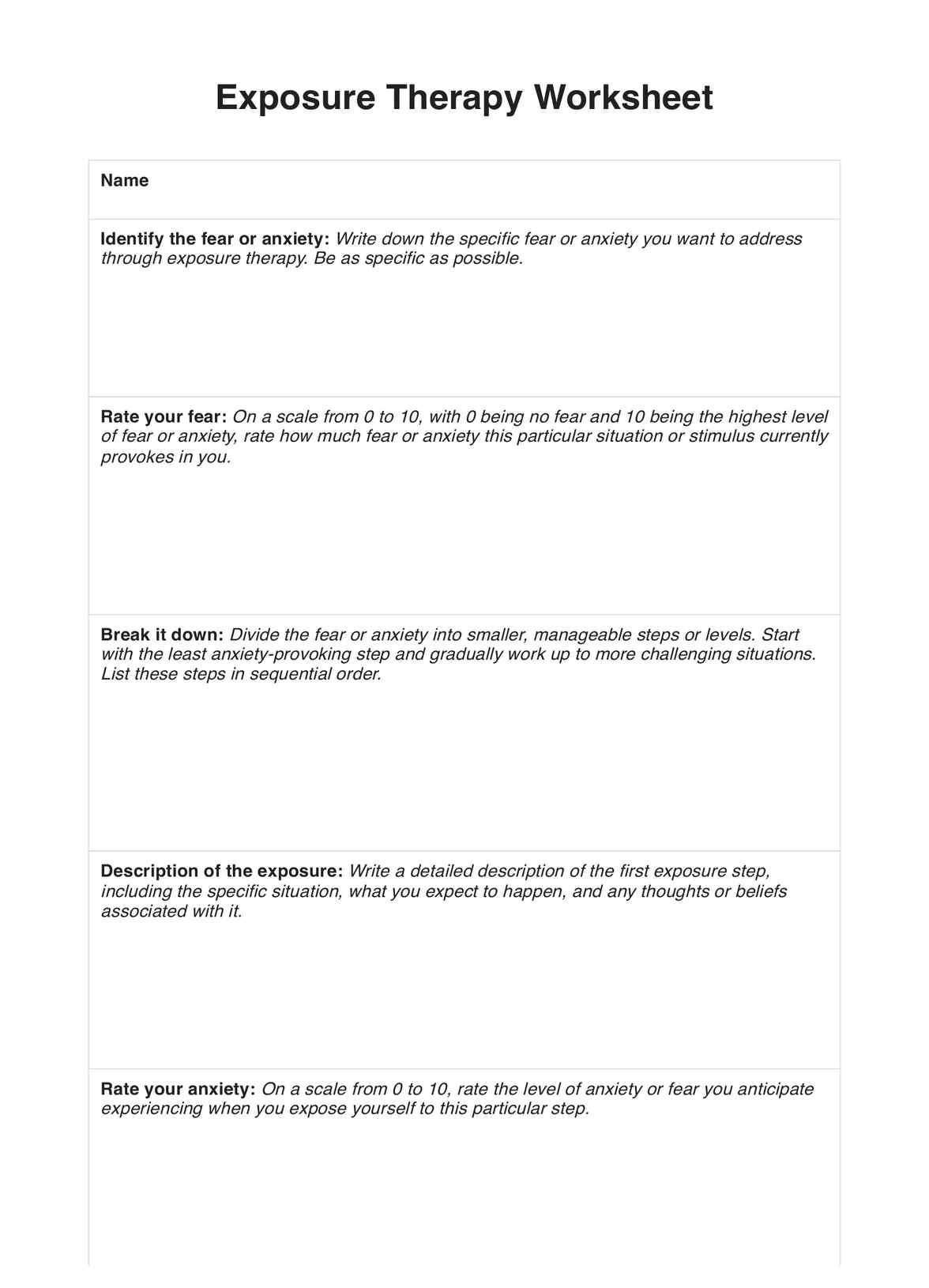Play Therapy Progress Notes Template
Download our high-quality Play Therapy Progress Notes Template to improve the efficiency and quality of your clinical documentation.


What are play therapy progress notes?
Play therapy is one way to help children navigate their growth and healing journey. Play therapy progress notes are important clinical documentation that capture the process and outcomes of play-based interventions with children. These detailed notes serve multiple crucial purposes: they track a child's therapeutic journey, document behavioral and emotional changes, and provide a detailed record of play therapy sessions and their effectiveness. Comprehensive play therapy notes include observations of the child's play patterns, complex emotions expressed, and responses to therapeutic interventions while maintaining appropriate clinical objectivity.
A play therapist can take note of the child's choice of play materials, their interactions during the session, specific behavioral patterns, and notable verbal expressions. Play therapists should also include the child's emotional state and progress toward established therapeutic goals. Additionally, play therapy progress notes serve as a communication tool between healthcare providers and help inform treatment planning and care coordination.
Play Therapy Progress Notes Template
Play Therapy Progress Notes Example
How to use this Play Therapy Progress Notes Template PDF
Understanding our structured notes template enhances clinical effectiveness while maintaining professional standards. The following are steps you can follow in applying this tool in your practice.
Step 1: Access the template
The first step is to access the template. Through the preview in this guide, you can click "Use template" to open and customize it within the Carepatron platform. You can also click "Download" to get a fillable PDF copy of the template.
Step 2: Fill in the play therapy progress note
To complete the play therapy progress note, fill in each section, including all relevant details such as your client's first and last name, date of birth, and the session date. Some important information includes observations about the child's behavior and responses during the session. Remember to be concise and only write what is necessary for the client's treatment, especially notes for future sessions.
Step 3: List your credentials
To authorize the document, provide your name and credentials to complete the progress notes.
Step 4: Store the progress note securely
Finally, once completed, you need to store the play therapy progress note in a secure, HIPAA-compliant platform. This can protect you from security breaches and data hacks that can occur when using online technology. If you prefer physical copies, make sure they are filed away somewhere secure.
When should you use this Play Therapy Progress Note Template?
Understanding when to use this resource impacts effective documentation and supports optimal therapeutic outcomes. The application of progress notes directly impacts the quality of care and treatment planning:
Initial assessment and documentation
Progress notes should be completed during or immediately following each session when observations of the child's mood, body language, and client's response are fresh and accurate. This documentation can include insights related to the findings of a mental status exam and establish baseline behaviors for comparison.
Ongoing session documentation
Regular documentation is essential during the course of treatment, especially when implementing therapy interventions such as non-directive play therapy or art therapy. Progress notes track the development of social skills, responses to limit setting, and overall child's progress.
Special circumstances and transitions
Additional documentation may be necessary when significant therapeutic events occur, such as breakthrough moments, crisis interventions, or when coordinating care with other providers. The template can be customized to fit the needs for group notes where multiple interactions need tracking or when planning for the next session based on observed progress and emerging themes.
Benefits of using the Play Therapy Progress Notes Template
Implementing play therapy progress notes within your practice has many benefits. You can elevate different components of client treatment and healthcare operations and prioritize patient needs.
Greater coordination of care
With play therapy progress notes having a standardized format, you can easily share their contents with fellow healthcare professionals. This is especially beneficial in the case of referrals, where other practitioners and clinicians may have to pick up where you left off. These progress notes provide a broad assessment with enough specificity to paint an accurate picture of the situation.
Higher transparency
Play therapy progress notes are the no-fluff solution to healthcare and mean you can record all the essential details, underlying or otherwise. Getting straightforward answers in healthcare can be difficult, which is always frustrating, but these notes avoid just that. You can capture all the essentials to communicate more effectively with clients and their caregivers if needed.
Increase reflective processes
Play therapy progress notes are an excellent record of your therapeutic operations and can be reviewed at any time. You can check whether certain treatment options were effective and why they might not have been, as well as a myriad of other health questions, queries, and concerns. You can also reflect on the quality and level of care you provide, which is always good practice.
Legal and insurance protection
Progress notes are a good way to record all treatment, medication, and/or equipment used during your sessions. This means that when it comes to making insurance claims, you can be reimbursed more accurately and according to what you actually used. Additionally, if a case ever reaches court or is legally assessed, you can be secure in your professional judgment with sufficient evidence provided.
Elevate your consistency
With our progress notes template's unified format, you can ensure that you treat each client with the same level of care and that you are consistent across notes. You can provide the same level of quality without compromise. Standardizing is always a huge plus, as you can develop a robust cognitive framework across your therapy practice.
Commonly asked questions
To write a play therapy session note, begin by documenting basic information, such as the session's date, time, and duration. Describe the activities engaged in during the session, noting the child's behavior, emotional responses, and any significant interactions or themes that emerged. Highlight any progress towards therapeutic goals and any concerns that need to be addressed in future sessions. Finally, summarize your observations and reflections on the session, ensuring confidentiality and professionalism.
During play therapy, therapists often use reflective listening and open-ended questions to encourage children to express themselves through play. Phrases like "Can you tell me more about that?" or "What do you think happens next?" help facilitate dialogue. Therapists may also comment on the child's actions, such as, "I see you're building a tall tower; it looks very strong!" This approach allows children to explore their feelings and thoughts safely while providing insights into their emotional state.
A progress note should include the date of the session, the duration, and the client's name. It should summarize the activities conducted during the session and describe the client's emotional state and behavior. Additionally, document any significant changes or developments since the last session, progress toward treatment goals, and any barriers to progress. It is also important to note any plans for future sessions or interventions, along with therapist observations and recommendations for ongoing treatment.



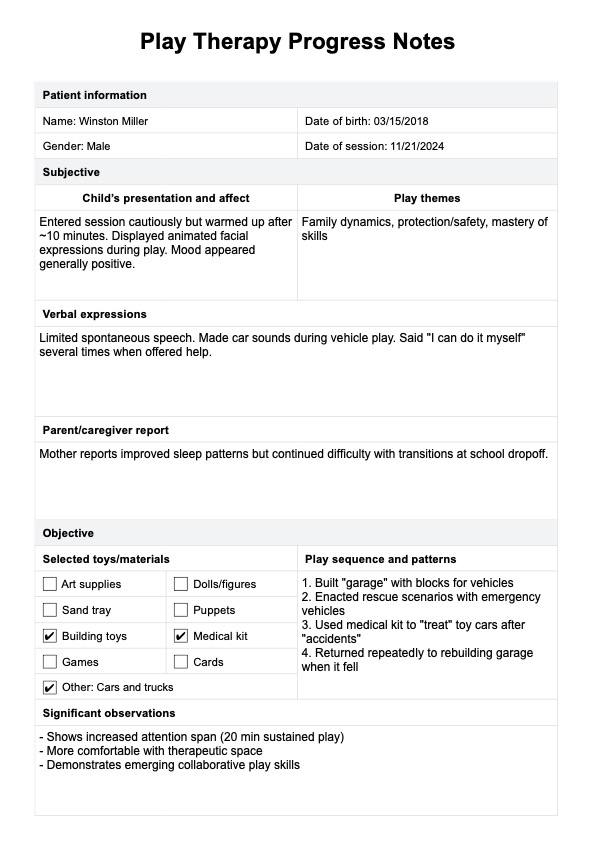

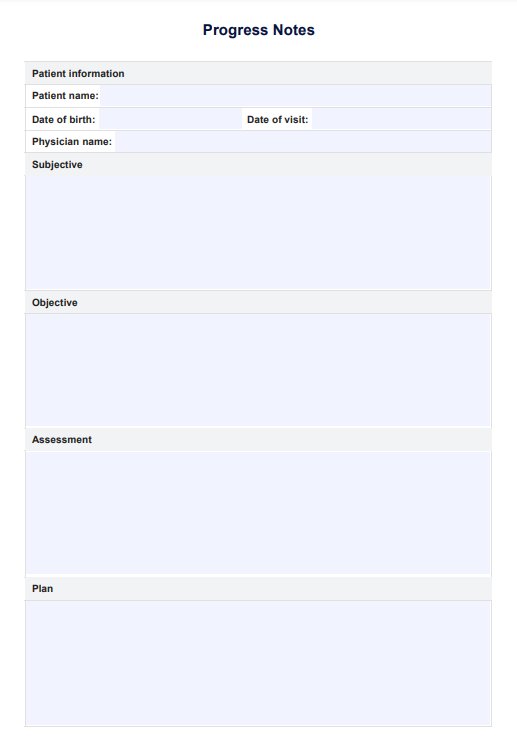







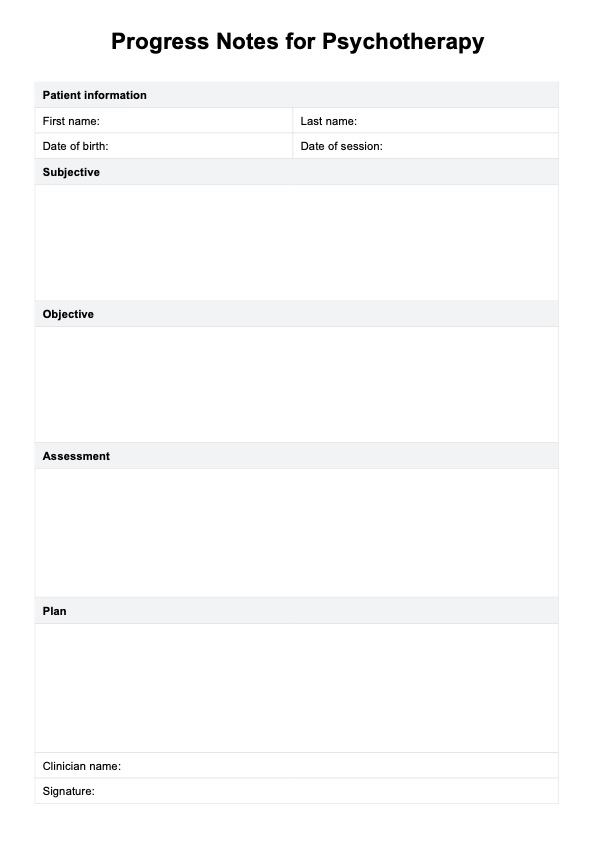













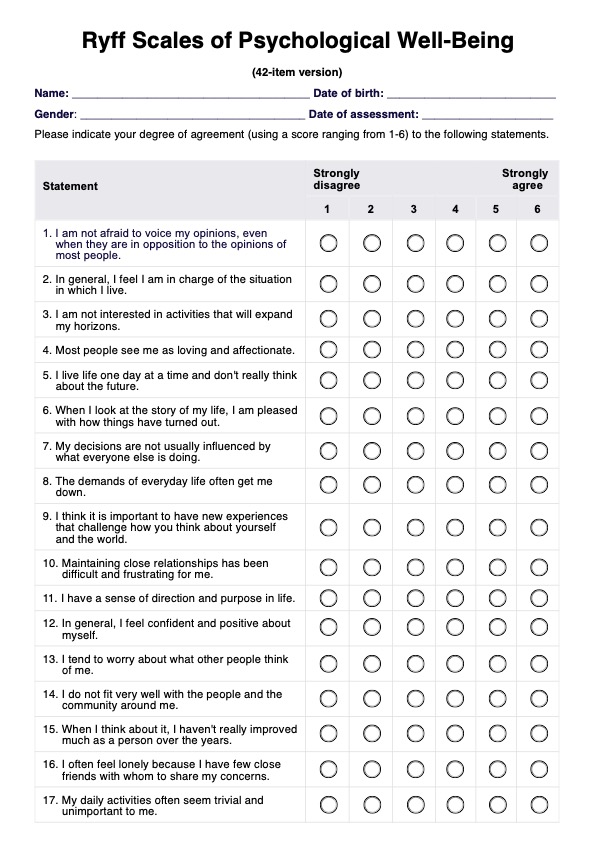
-template.jpg)




